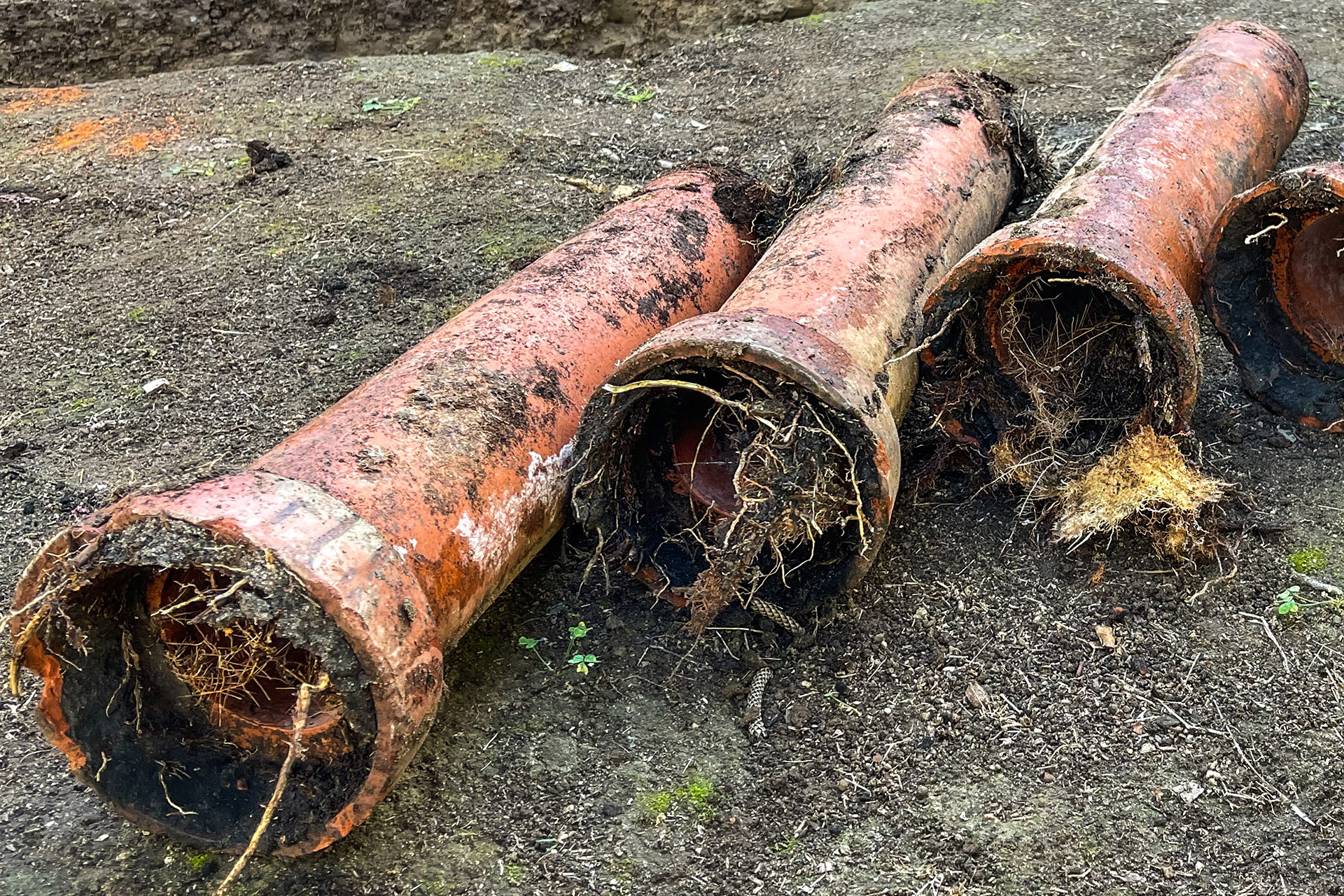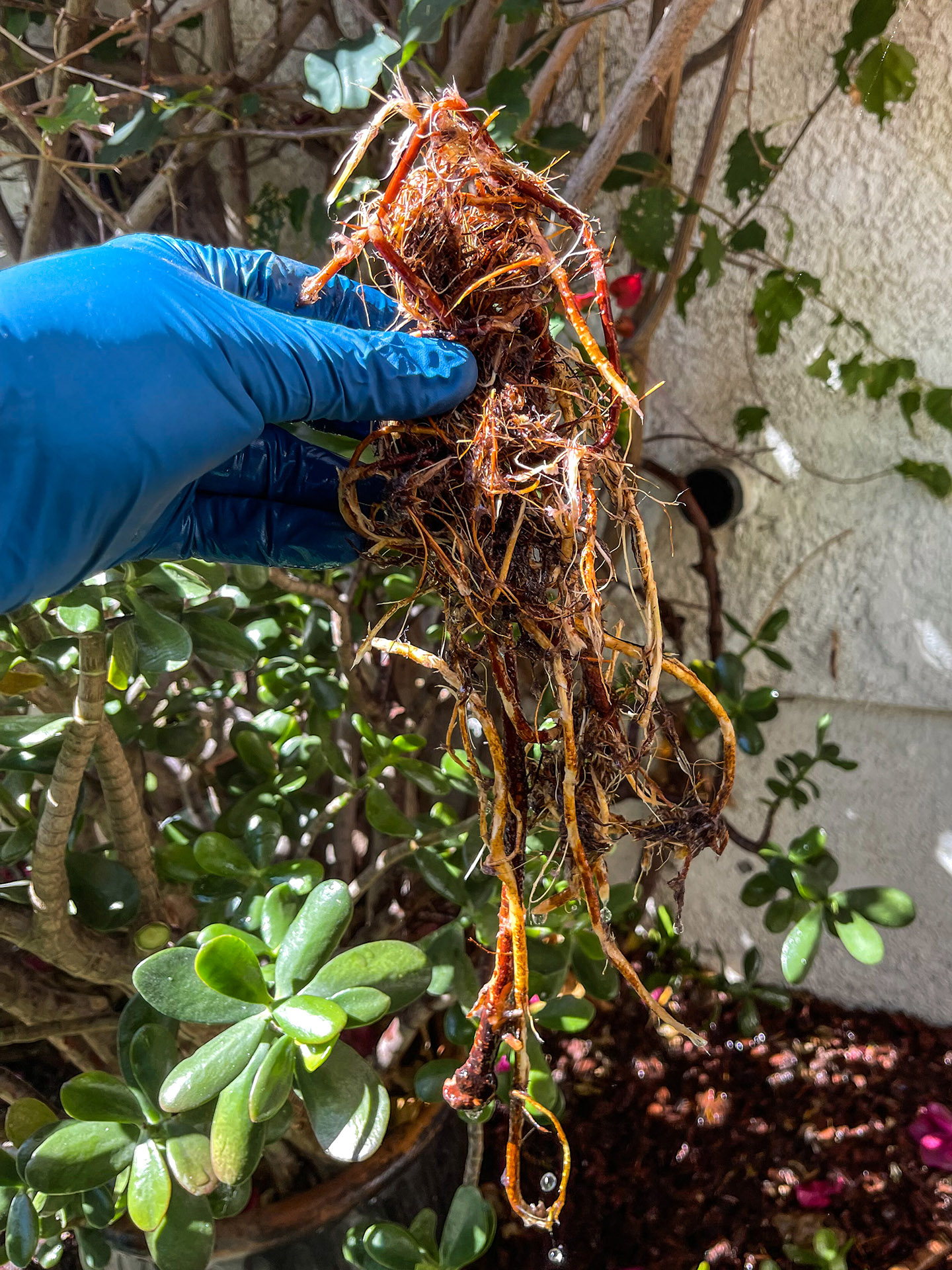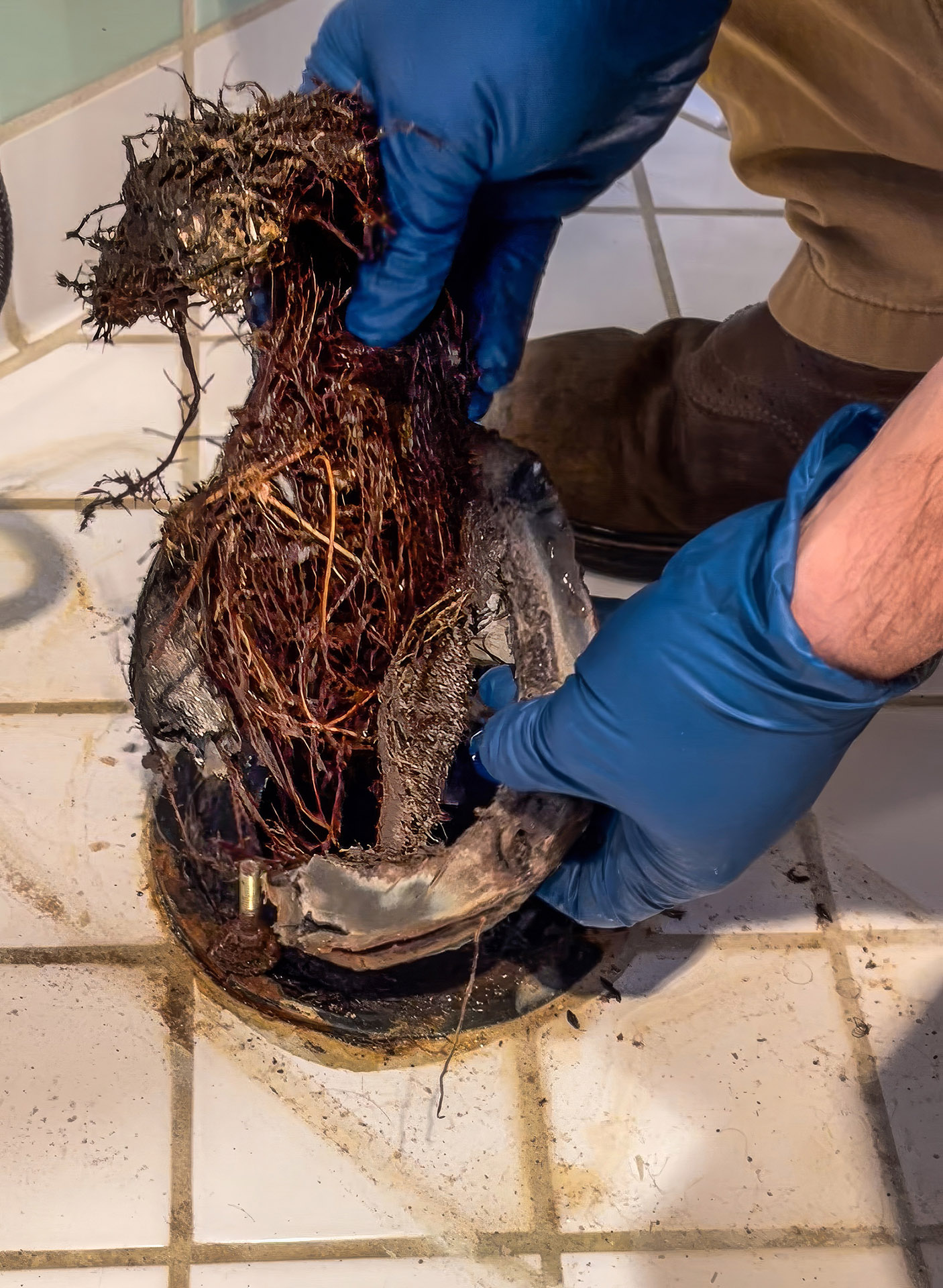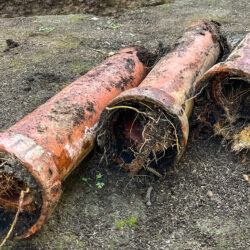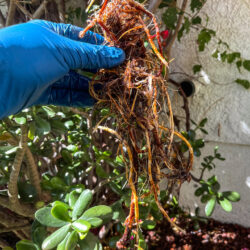Rooter service is a specialized plumbing solution designed to remove stubborn blockages and repair damaged pipes, particularly those infiltrated by invasive tree roots. In San Diego, where mature trees and aging infrastructure are common, homeowners often encounter plumbing problems that require professional root removal services. A slow-draining sink or intermittent toilet backups may indicate the presence of such a problem in your plumbing system. Addressing these situations immediately can help prevent more serious damage and ensure the longevity and reliability of your home’s plumbing system.
In this article, we’ll look at the causes of this problem, the most effective methods for removing roots from sewer pipes, ways to prevent them from entering sewer systems in the future, and more. Additionally, this article outlines average rooter service costs in California, specifically for San Diego.
Contents
What Does Rooter Service Mean?
Rooter service refers to specialized plumbing techniques initially developed to clear pipes clogged by invasive tree roots within residential drainage and sewer systems. Originally developed to remove tree roots infiltrating underground pipes, the term now encompasses a variety of methods used to address stubborn blockages and maintain the health of plumbing systems.
In San Diego and other coastal California cities, where mature landscaping and aging infrastructure are common, rooter services are used to address problems such as slow drains, recurring clogs, and sewer backups. Professional plumbers utilize video inspection cameras to effectively diagnose these problems, and tools like motorized drain snakes or hydro-jetting equipment to solve them, ensuring the longevity and reliability of the home’s plumbing.
Signs Indicating the Need for Rooter Service
All homeowners and businesses must recognize the signs that indicate the need for professional rooter services. Addressing these issues promptly prevents more severe plumbing problems. Here are the key indicators:
- Slow Draining Fixtures: If sinks, bathtubs, or showers are draining more slowly than usual, it indicates a developing blockage in your plumbing system.
- Standing Water: Standing water that persists in sinks, showers, or around floor drains indicates a significant blockage. This issue increases the risk of backups and potential water flooding.
- Unpleasant Odors: Foul smells emanating from drains or toilets indicate trapped debris or sewage buildup within your pipes.
- Gurgling Noises: Gurgling sounds when you flush water, most often in the toilet, are a sign that the main sewer line is clogged. This symptom is often a precursor to more serious drainage problems and requires immediate attention from a plumber.
- Multiple Simultaneous Clogs: If you experience clogs in multiple fixtures simultaneously, such as sinks, toilets, or showers, it is indicative of a blockage in the main sewer line.
- Water Backups: Water backing up into sinks, bathtubs, or toilets when using other fixtures indicates a significant blockage in your plumbing system.
- Overflowing Toilets: Toilets that overflow or rise significantly upon flushing indicate deep blockages within the drain or sewer line. Address this issue promptly to prevent further complications.
- Outdoor Odors & Wet Spots: Foul odors in your yard, especially near sewer line access points, or unexplained wet or spongy areas on your lawn, signal a blockage or damage in the outdoor sewer line.
If you notice any of these signs on your San Diego property, contact a professional immediately. Early intervention is key to avoiding more extensive and costly plumbing issues.
Do Tree Roots Really Cause Clogged Drains & Sewers?
San Diego residents frequently experience clogged drainage and sewer systems, often attributing these blockages to invasive tree and shrub roots. The truth is that plants in the sewer or drainage system are usually the result of pipe damage due to corrosion or poor installation/repair.
Tree roots generally cannot penetrate intact cast iron or plastic sewer pipes.
In plastic pipes, they grow in poorly connected or broken joints (more common in plastic pipes due to earthquakes and ground movement).
In cast iron pipes, most often due to corrosion, water seeps through cracks to the outside of the pipe and roots of trees, shrubs or seeds of any plant begin to grow toward the source of moisture.
Clay pipes are not susceptible to corrosion, but 90% of them have cracks at the joints where the pipe enters the socket. So, there is a large bundle of roots every 6 feet at each joint.
This causes mineral deposits and debris, detergent residue, food, grease, oil, hair, and more to build up in the pipes, resulting in reduced flow rates and blockages.
Therefore, in most cases, root removal and cleaning are not sufficient and the sewer/drainage pipes need to be repaired. Almco’s specialists offer trenchless repair methods such as epoxy lining and, in cases where the pipe has been completely destroyed, trenchless installation of new pipes using the pipe bursting method.
Rooter Service Techniques
Rooter services employ a number of specialized techniques to effectively clear clogs and maintain the functionality and longevity of plumbing systems. These methods are tailored to address specific problems within drain and sewer lines.
Mechanical Drain Snaking
This traditional method uses a flexible, rotating cable equipped with cutting blades to break through obstructions such as tree roots, grease, and debris. It’s particularly effective at clearing blockages in smaller pipes and is often the first line of defense against common clogs.
Hydro Jetting
Hydro jetting uses high-pressure water jets to thoroughly clean the inside walls of pipes.
This technique is highly effective at removing stubborn deposits such as grease, scale, and sludge.
Video Camera Inspection
A small, waterproof CCTV-camera is inserted into the plumbing system, providing real-time visuals of pipe conditions.
This allows technicians to first identify the exact location and nature of blockages or damage, facilitating targeted repairs and ultimately quality control.
Tips for Preventing Roots in Underground Piping
As you can see, tree roots are a big problem for drain and sewer lines, especially in areas with mature landscaping like San Diego. Roots naturally seek moisture and can infiltrate even small cracks in underground pipes, leading to costly damages and sewage backups.
Here are practical tips to prevent root intrusion and protect your plumbing system:
- Aging Pipes: Older pipes, especially those made of clay or cast iron, are more susceptible to root intrusion. Replacing them with modern materials such as ABS (Acrylonitrile Butadiene Styrene) or PVC (Polyvinyl Chloride), or using trenchless methods such as epoxy pipe lining can provide a more durable solution.
- “Sewer-Safe” Trees: When planting new trees, select species with less aggressive root systems and plant them at least 10 feet away from sewer lines. Examples of sewer-safe trees include Amur maple, paperbark maple, and flowering dogwood. Routine maintenance, including mechanical snaking or hydro-jetting, can address root intrusions before they cause significant blockages. Regular inspections further help identify issues early.
- Chemical Root Inhibitors: Chemical treatments such as foaming root killers or copper sulfate can deter root growth in pipes. However, these should be used with caution as they can be toxic to plants and may be restricted in some areas.
Implementing these preventative measures can significantly reduce the risk of root-related plumbing problems and ensure the longevity and efficiency of your sewer system.
